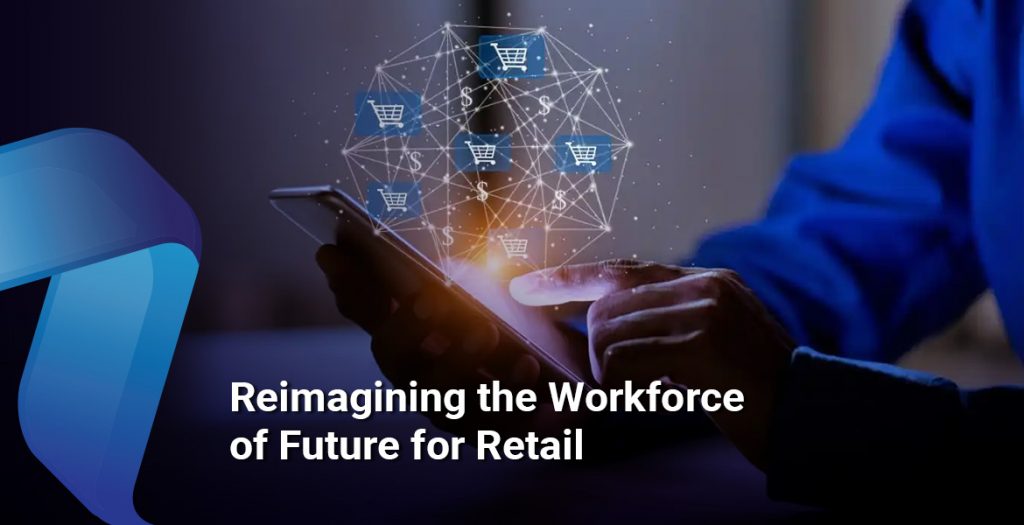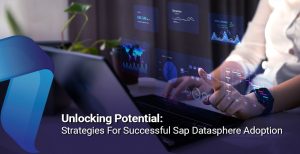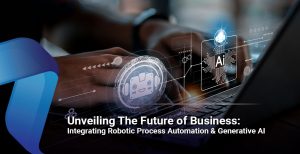As the nature and content of work continue to shift in the post-pandemic era, organizations are looking forward to signing up with end-to-end transformation programs. Retail’s most recent strategic transformation has been intensified and accelerated due to COVID-19.
In the US, expenses on clothes plummeted by 50% from February to March 2020, but food and beverage purchases in grocery stores increased by 26%.1 With worldwide lockdowns beginning to loosen, the question on everyone’s mind is what will happen to retail next. Is there going to be a recovery in discretionary spending?
Influenced by the pandemic, the following trends will dominate the industry for the rest of the years ahead:
Trend #1: Digital Transformation
Retail trends seen over the last few years have accelerated dramatically, and digital experience is at the top of the list.
Brands that have made digitization a foundation for their operations have transformed store offerings to stay ahead of the competition. As we transition to the new normal, businesses should consider emerging technologies to augment their workforce and empower staff to enhance customer experience.
Trend #2: Cohesive Sales Channels
Before COVID, integrating sales channels to achieve frictionless commerce across all networks was a big trend, and today it has become even more important.
Bringing together e-commerce and brick-and-mortar sales points have been challenging for merchants. The disruption has underscored the necessity for ‘unified commerce,’ necessitating consistent experience across all sales channels.
With the advent of e-commerce through smartphones, social and live events, merchants ensure that they have the resources necessary to meet customers in all scenarios and create a seamless relationship between them. As a result, they meet client expectations and provide the type of experience that tech-savvy customers demand.
Trend #3: Upskilling in Digital Technologies
A recent McKinsey report on Consumer and Retail study suggests that the retail workforce needs to be agile and digitally fluent to be future-ready.2 Companies with digitally creative employees are nearly three times more likely to increase revenue by at least 20% in the initial three years and around five times more likely to continue these growth rates in the next three years. Besides, most workers recommend employers who encourage learning strategies.
Crucial Outlook Changes for Business Leaders
When organizations continue to function with a narrow and traditional perspective, it pervades the work spectrum. There are unprecedented opportunities in the intersection of technology and talent, enabling retailers to discover new sources of value-and purpose enhancement in the ever-changing market conditions.
Companies that redefine work to focus on human qualities empower their people to identify challenges and opportunities; build solutions to address problems and execute new approaches, to ensure results are achieved.
Retailers can upgrade future work levers with these actions:
- Expand the value and impact offered to consumers, workers, and communities by shifting the goal of work beyond efficiency.
- Address previously unidentified issues and opportunities by redefining work, stepping away from everyday duties, and moving towards creative expression.
- Cultivate employment that allows putting our human traits to good use, moving away from skills and towards capabilities.
- Build relationships within and between teams so that managers and employees may concentrate on output and impact rather than workflow and transactional tasks. Connect teams to think about the implications of what’s essential to consumers and employees.
- Inspire a culture of risk-taking and tolerance for unconventional ideas.
Business executives set goals beyond cost and efficiency to incorporate value and meaning. They decide on the opportunity to examine, restructure, and redefine work, workforce, and workplace options that use the benefits of automation, alternative talent sources, and collaborative workplaces. They drive the organization, leadership, and workforce development programs to gain access to skills, curate next-generation experiences, and engage the future workforce in long-term partnerships while exposing business leaders to new ways of working.
References













